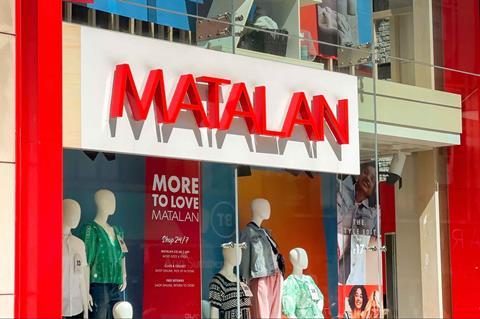Grey pound: which retailers are best at capturing over-50s spend?
To find out which retailers hit the mark with the older generation, CACI has used transaction data to reveal the brands that over-index with the over-50s and which Acorn consumer profile types they register with the most

During years of turbulence and tight budgets, retail cannot underestimate the power of the grey pound. Throughout the UK’s recent economic instability, the financial solvency of older generations has been remarkably resilient.
According to CACI, overall transactions rose by 5% over the last year and that growth was driven largely by the over-50s, with the grey pound’s increase of 6% outstripping the 3% for younger groups.
“It shouldn’t be called the grey pound; it should be the gold pound,” says Heather Jackson, co-founder of GenM, a partner for brands and retailers that helps them serve the needs of menopausal consumers.
“Right now, older women in particular see themselves as invisible and yet they’re probably at the highest level of their career, have more spending power than ever before regardless of social demographic and have the biggest friendship group, so the biggest network and biggest influence.
“They’re also the biggest consumer spender with the greatest responsibility for those decisions. So why wouldn’t we make them feel like they can thrive?”
Despite this, over-50s can be largely underestimated – and underserved – in the retail industry.
To find out which retailers are hitting the mark with the older generation, we asked CACI to reveal the brands that over-index with the over-50s, using transaction data, and identify which Acorn consumer profile types they register with the most.
No one will be shocked to see the likes of Dobbies Garden Centres, Next or Marks & Spencer on a list of retailers favoured by the over-50s. However, looking a little closer, there are plenty of revelations about the developing shopping habits of the UK’s older generation.
For one, the adoption of secondhand shopping apps such as Vinted is not a new fad limited to young people, which may have been assumed.
In fact, in percentage terms, this trend is growing with older people more quickly than other age groups, according to CACI associate partner for retail and FMCG Chris Lidington.
“Earlier in the year, CACI carried out a deep dive into Vinted’s exponential growth, finding that the platform has multiplied its transaction numbers sevenfold in 18 months,” he says.
“Increasing customer demand for value retail, both online and offline, and the generational shift in spending patterns from young people were thought to be the main drivers. Well, the overall growth of Vinted is at a whopping 299% for the grey pound, compared with 271% in the younger groups.
“While the older group may have started from a lower base, explaining the sharp rise, these numbers tell us that secondhand clothing is certainly not just a young person’s game.”
Acorn consumer classification groups
Mature success
Comfortable empty nesters who have a good standard of living, on an income higher than the UK average
Semi-rural maturity
Stable older people who live in semi-rural locations, with an income on or just below the UK average
Stable seniors
Much of middle-of-the-road Britain, with an income just below the UK average
Constrained pensioners
Older people who live in the most deprived areas of towns and cities across the UK, with the lowest incomes
On the higher end, Frasers Group’s ultra-trendy fashion and lifestyle store Flannels indexes well with the older generation, as do Patagonia and Superdry.
When we look at value, however, the picture is much more predictable. High street footwear retailers Shoezone and Deichmann capture the eye of seniors on the tightest budgets, while New Look is the only retailer to run purely in the middle of the road, indexing well with only the stable seniors group.
The only fashion retailer to attract the most attention across every consumer profile group, from those living especially comfortably right through to those on tight budgets, is Matalan. According to Matalan’s chief customer officer Ali Jones, that is no happy accident.
“Understanding the family has always been important to Matalan,” she says. “I think the main reason why we’ve got such a solid ground in the over-50s is because they’ve grown up with us. We’re 38 years old and we brought a really unique value proposition to the market back in the mid-80s.
“This business has always listened to what its customers want and I think what we are doing now is doubling down on that and getting really into the detail.
“I’ve just done an even greater deep dive into what our customers are spending with us, what their attitudes are and what’s important to them. We’re spending significantly more time with our colleagues in store, who are fantastic at being advocates for us as a business, but also feeding us information constantly about what customers are saying.
“Also, a lot of our colleagues are over 50, so our colleague base reflects our customer base, and that’s a great way of staying really close to them.”

According to Jones, the key to keeping older customers happy lies in inclusivity throughout the business. The team has been working with former Jaeger managing director Fiona Lambert on a consultancy basis to make sure they’re hitting the right notes.
“We need to make sure that we’re really inclusive in the way we’re communicating, the way we are running our customer service in our stores, and the way we’re building our ranges and recognising what they’re looking for,” says Jones.
“Our customers want their version of the latest trends, comfort, style and quality, but we have to recognise that they don’t want to feel alienated in the environment, so we try to make sure they feel comfortable.”
At a time when every penny counts, retailers should view many older consumers’ feelings of being forgotten as a golden opportunity – both for themselves and for the greater good, says GenM’s Jackson.
“We’re not just being commercial about this. If we serve this group better, we could actually use that money to change society’s thinking about older women, in particular, and how they see themselves.
“If she thrives, the world thrives and the retailer thrives. That’s the rhetoric we need to have retailers understand.
“I would argue that, at this moment in time, in a climate where brands are really working hard to try to sell products to consumers, they should do so purposefully and actually target the right audience in the right way. At least you’ve got a better chance of keeping them than you have by just ignoring them.”





